System overview, bus and diagnostics communication
|
|
System overview, bus and diagnostics communication
|
|
System overview, functions, cars with Trionic T7 engine management system
|
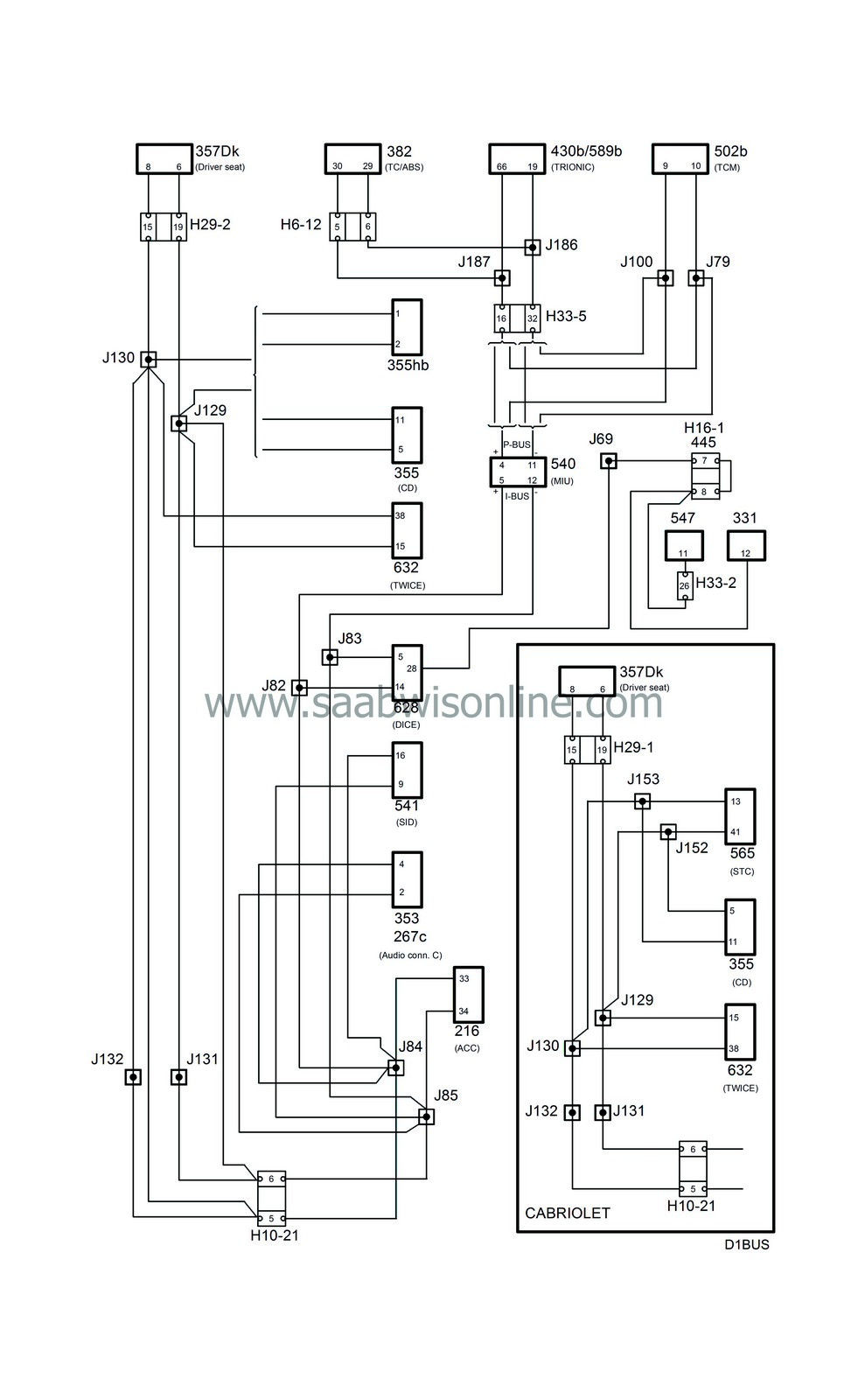
|
System overview, function, cars with EDC 15 engine management system
|

|
System overview, function, cars with PSG 16 engine management system
|
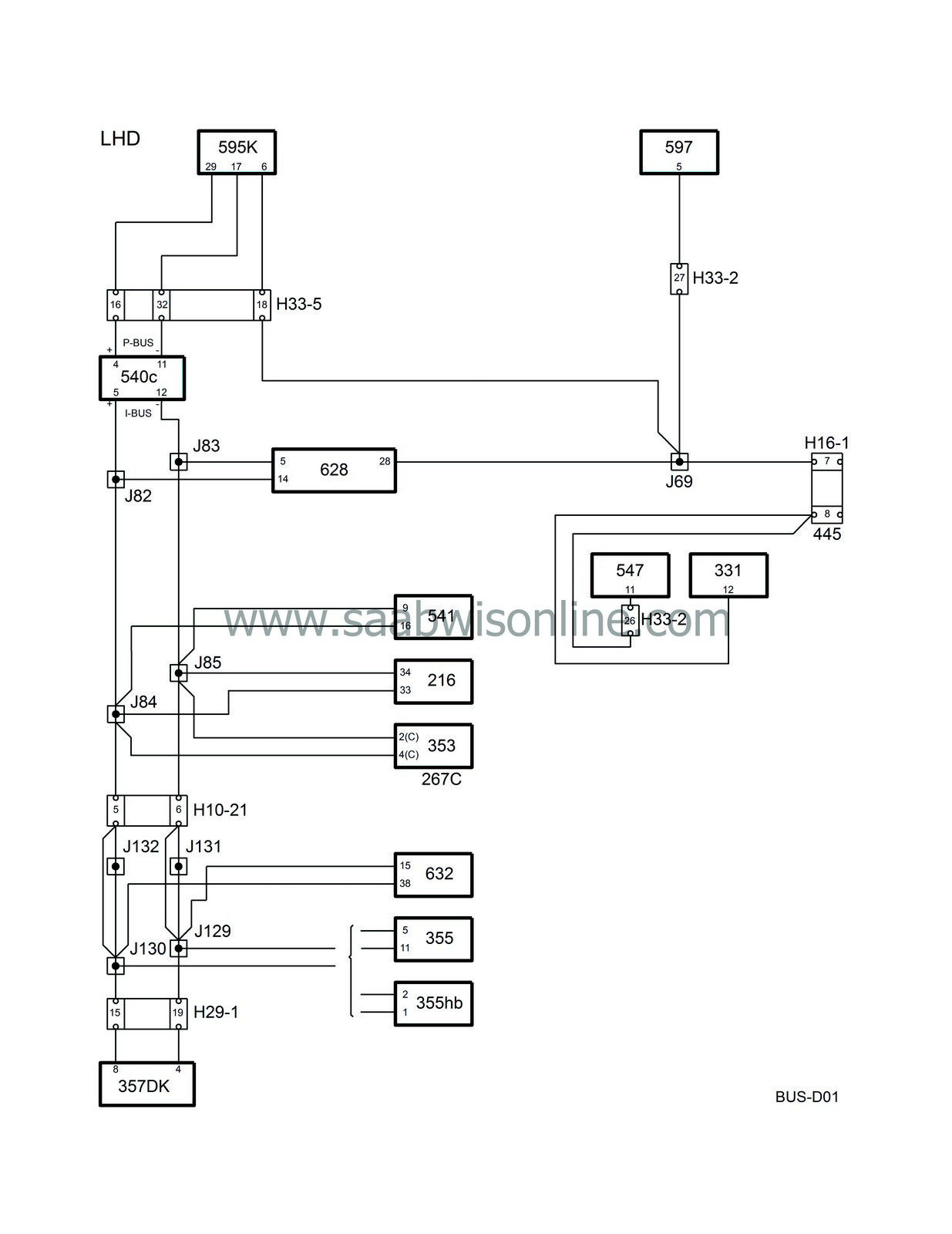
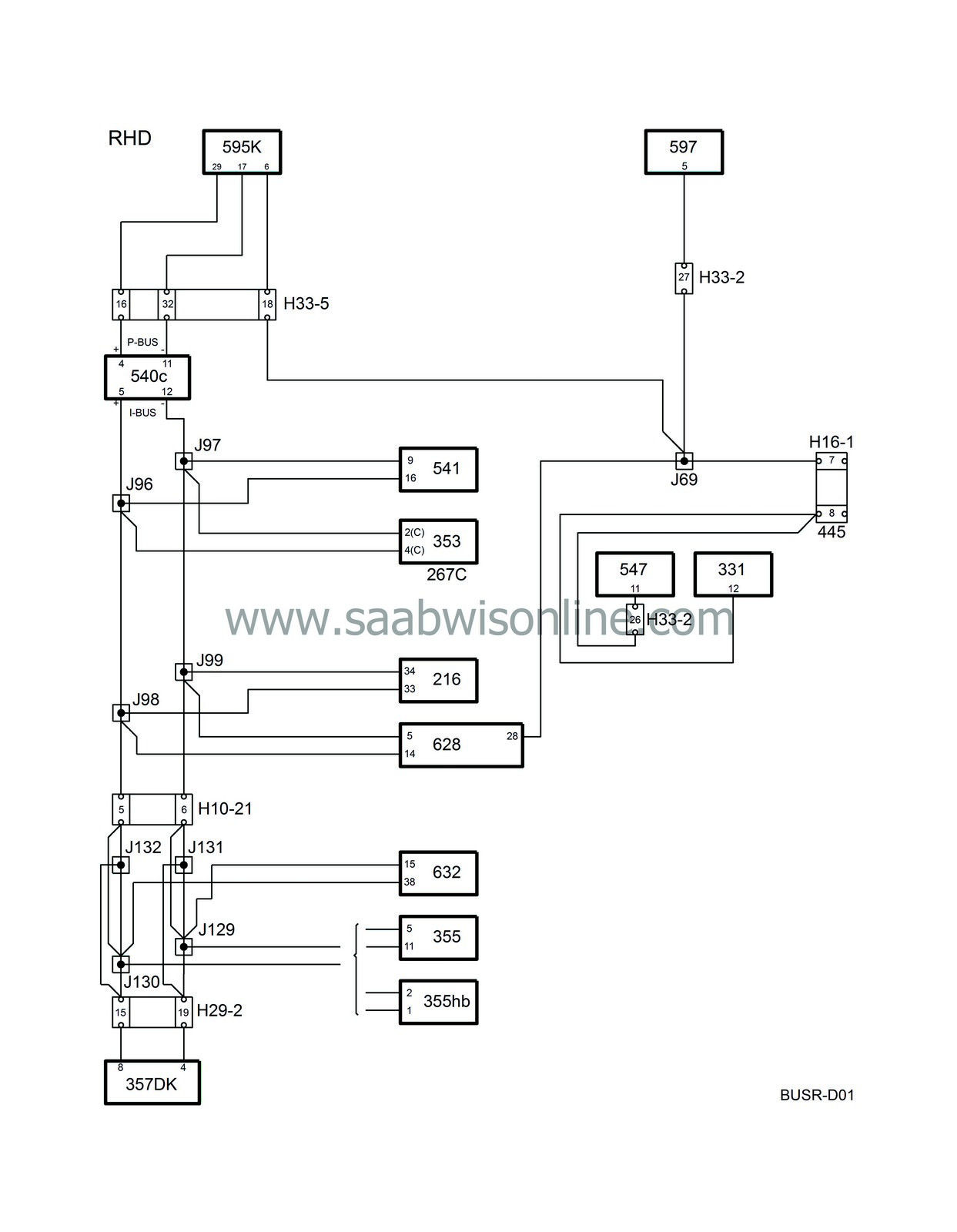
|
System overview, components connected to a bus, cars with Trionic T7 engine management system
|
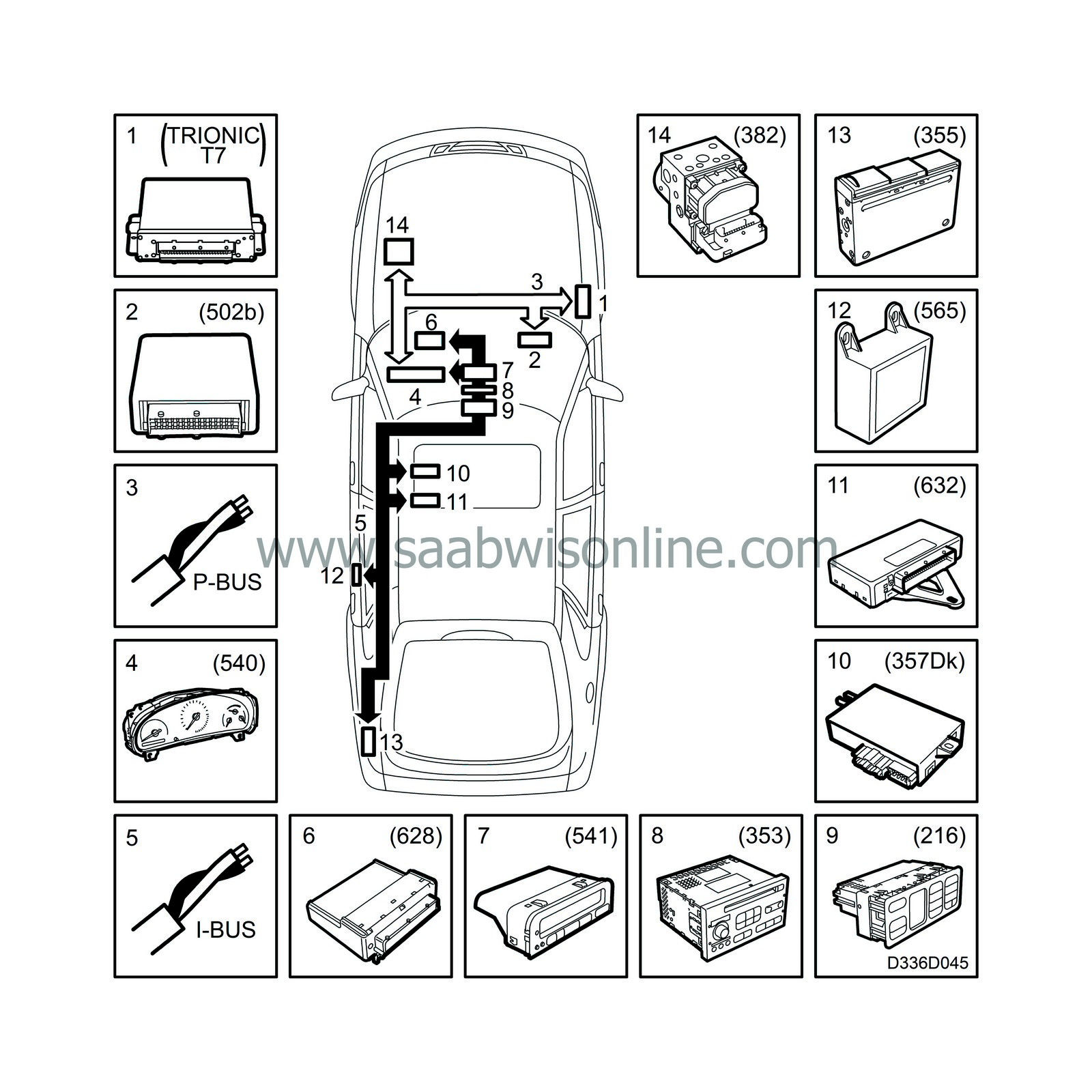
|
1.
|
Trionic, engine management system (430b, 589b)
|
|
2.
|
Transmission Control Module (TCM) (502b)
|
|
3.
|
P-bus (Powertrain bus)
|
|
4.
|
Main Instrument Unit (MIU) (540)
|
|
5.
|
I-bus (Instrument bus)
|
|
6.
|
Dashboard Integrated Central Electronics (DICE) (628)
|
|
7.
|
Saab Information Display (SID) (541)
|
|
8.
|
Audio system, main unit (353)
|
|
9.
|
Automatic Climate Control (ACC) (216)
|
|
10.
|
Power Seat Memory (PSM) (357Dk)
|
|
11.
|
Theft Warning Integrated Central Electronics (TWICE) (632)
|
|
12.
|
Soft Top Control (STC) (565)
|
|
13.
|
CD changer (CDC) (355)
|
|
14.
|
Traction Control (TC/ABS) (382)
|
|
System overview, components connected to a bus, cars with EDC 15 engine management system
|
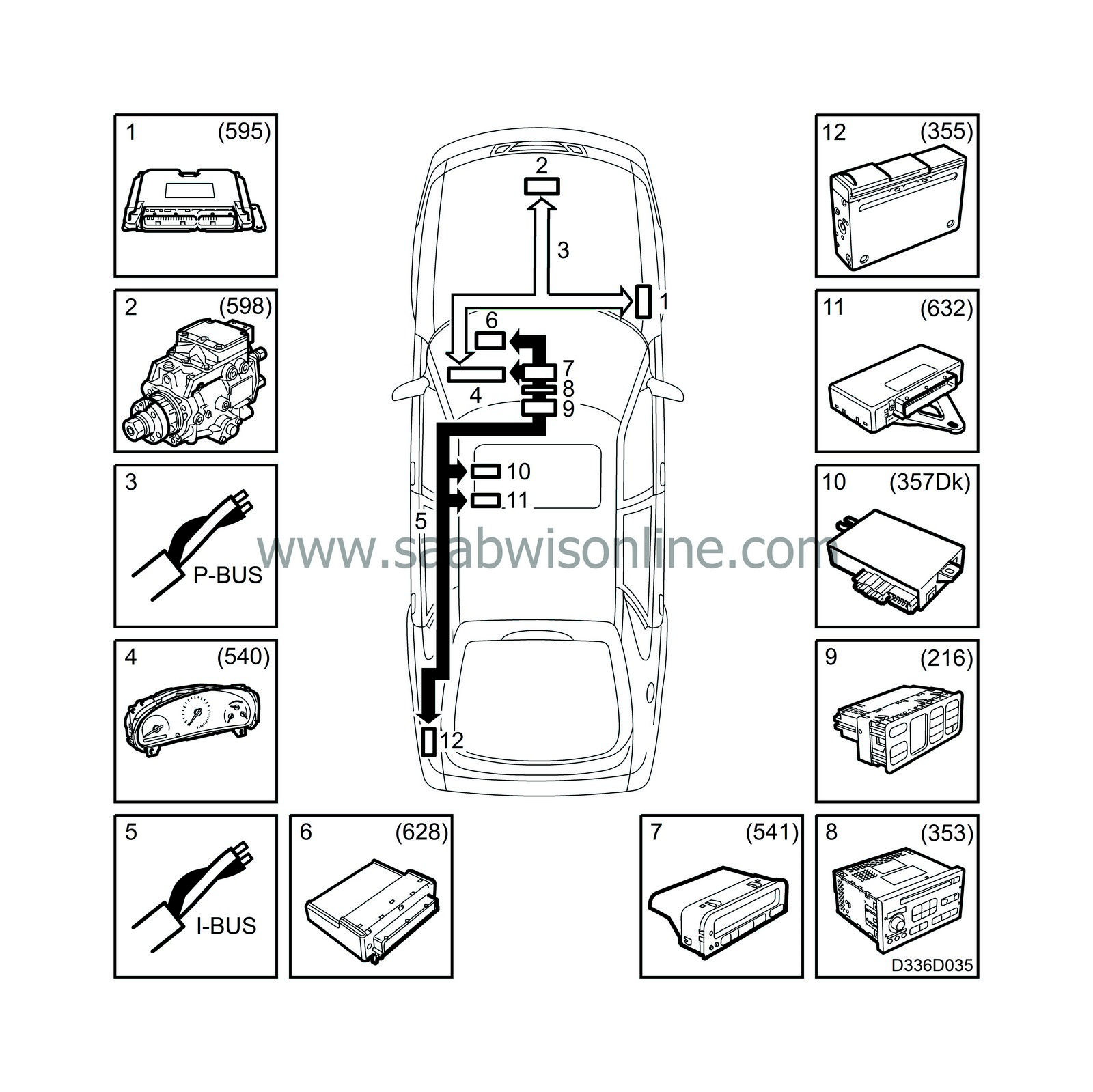
|
1.
|
Electronic Diesel Control (EDC 15) (595)
|
|
3.
|
P-bus (Powertrain bus)
|
|
4.
|
Main Instrument Unit (MIU) (540)
|
|
5.
|
I-bus (Instrument bus)
|
|
6.
|
Dashboard Integrated Central Electronics (DICE) (628)
|
|
7.
|
Saab Information Display (SID) (541)
|
|
8.
|
Audio system, main unit (353)
|
|
9.
|
Automatic Climate Control (ACC) (216)
|
|
10.
|
Power Seat Memory (PSM) (357Dk)
|
|
11.
|
Theft Warning & Integrated Central Electronics (TWICE) (632)
|
|
12.
|
CD changer (CDC) (355)
|
|
System overview, bus components, cars with PSG 16 engine management system
|

|
1.
|
Fuel pump with PSG 16 control module (595)
|
|
2.
|
P-bus (Powertrain bus)
|
|
3.
|
Main Instrument Unit (MIU) (540)
|
|
4.
|
I-bus (Instrument bus)
|
|
5.
|
Dashboard Integrated Central Electronics (DICE) (628)
|
|
6.
|
Saab Information Display (SID) (541)
|
|
7.
|
Audio system, main unit (353)
|
|
8.
|
Automatic Climate Control (ACC) (216)
|
|
9.
|
Power Seat Memory (PSM) (357Dk)
|
|
10.
|
Theft Warning & Integrated Central Electronics (TWICE) (632)
|
|
11.
|
CD changer (CDC) (355)
|
|
System overview, components connected to K lead, EDC 15
|
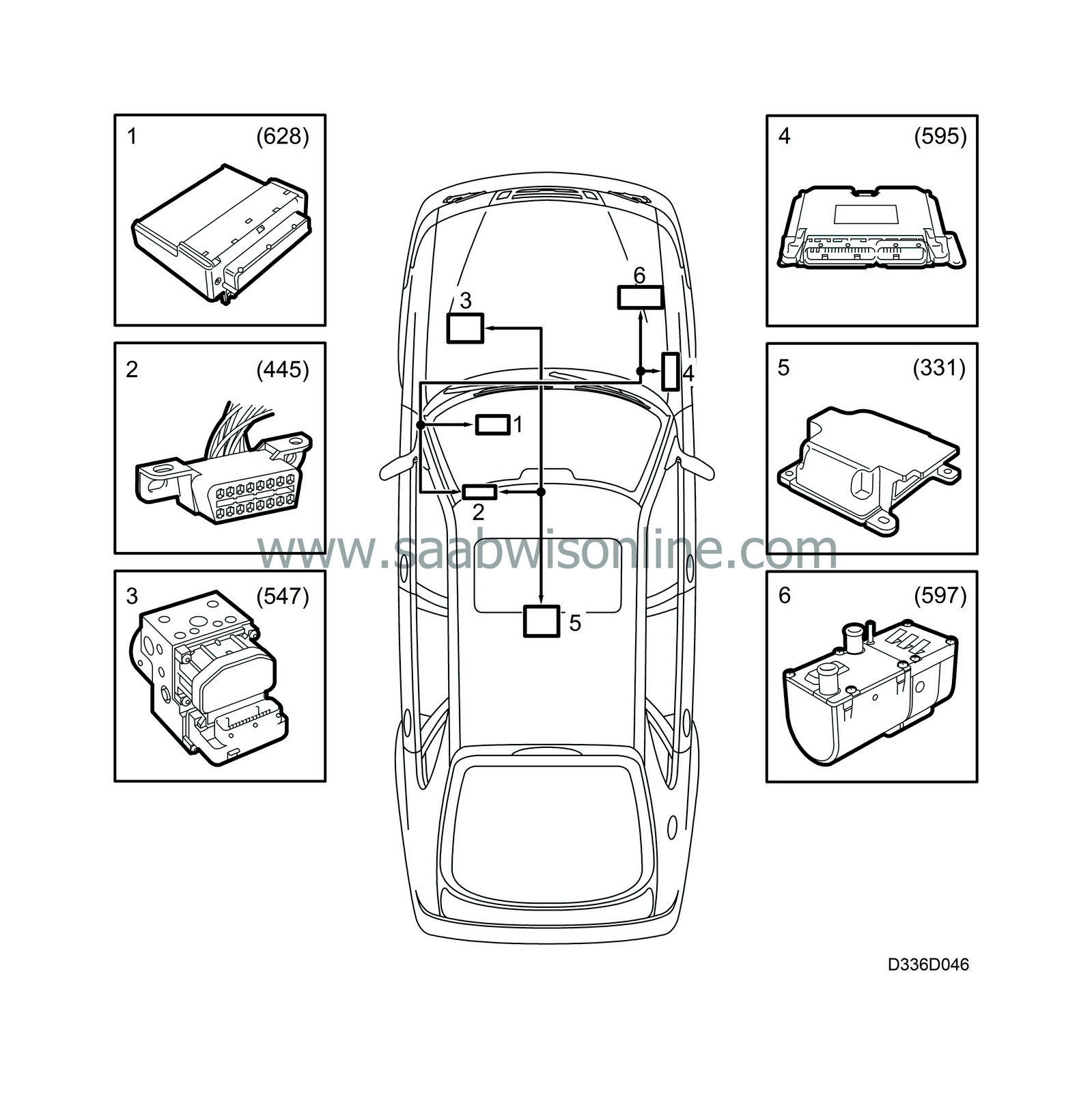
|
1.
|
Dashboard Integrated Central Electronics (DICE) (628)
|
|
2.
|
Data link connector (H16-5/445)
|
|
3.
|
Anti-lock Brake System (ABS) (547)
|
|
4.
|
Electronic Diesel Control (EDC 15) (595)
|
|
6.
|
Diesel Additional Heater (DAH) (597)
|
|
System overview, components connected to K lead, PSG 16
|
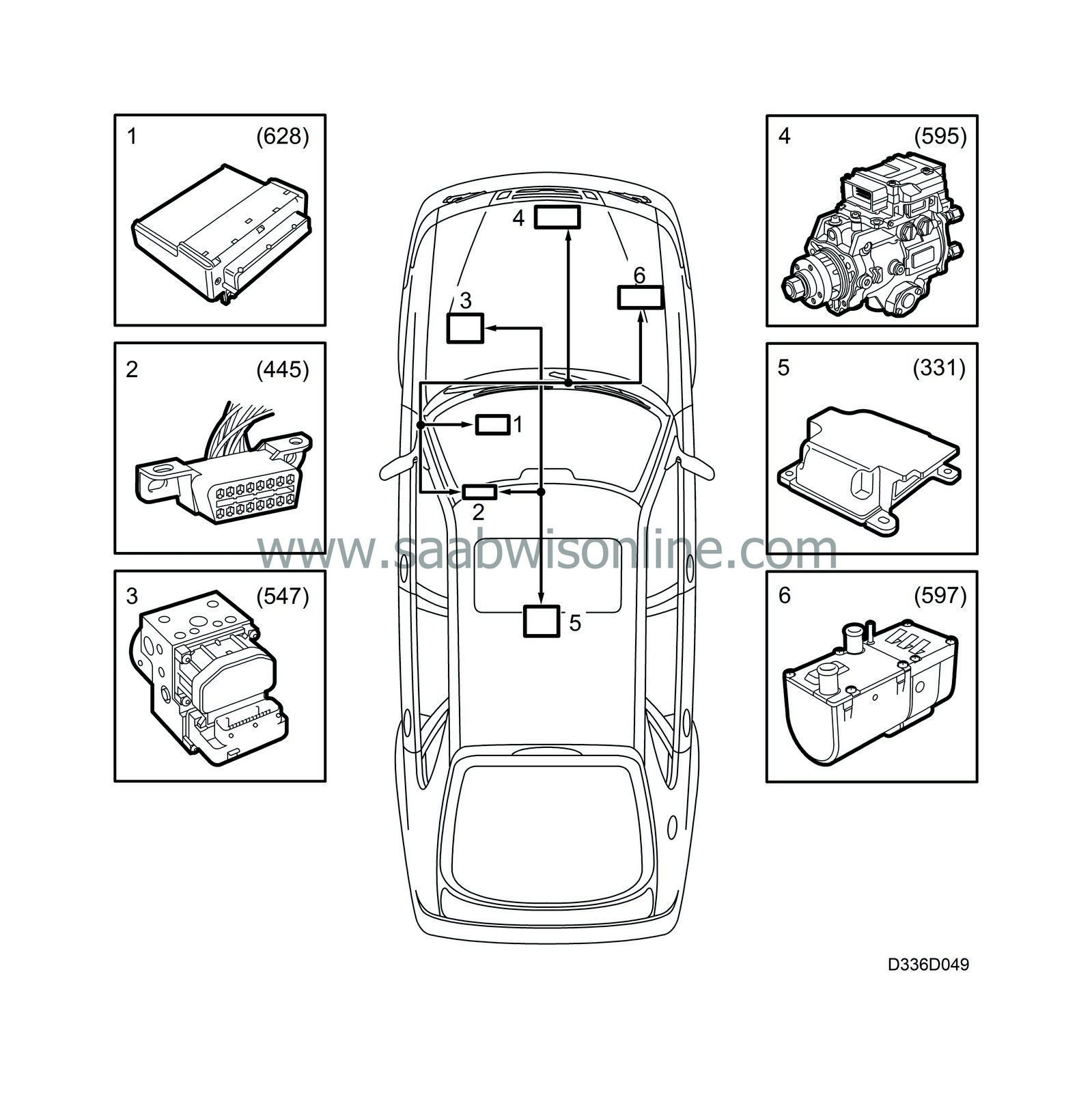
|
1.
|
Dashboard Integrated Central Electronics (DICE) (628)
|
|
2.
|
Data link connector (H16-5/445)
|
|
3.
|
Anti-lock Brake System (ABS) (547)
|
|
4.
|
PSG 16, diesel engine management system (595)
|
|
6.
|
Diesel Additional Heater (DAH) (597)
|
|
System overview, brief description, cars with Trionic T7 engine management system
|
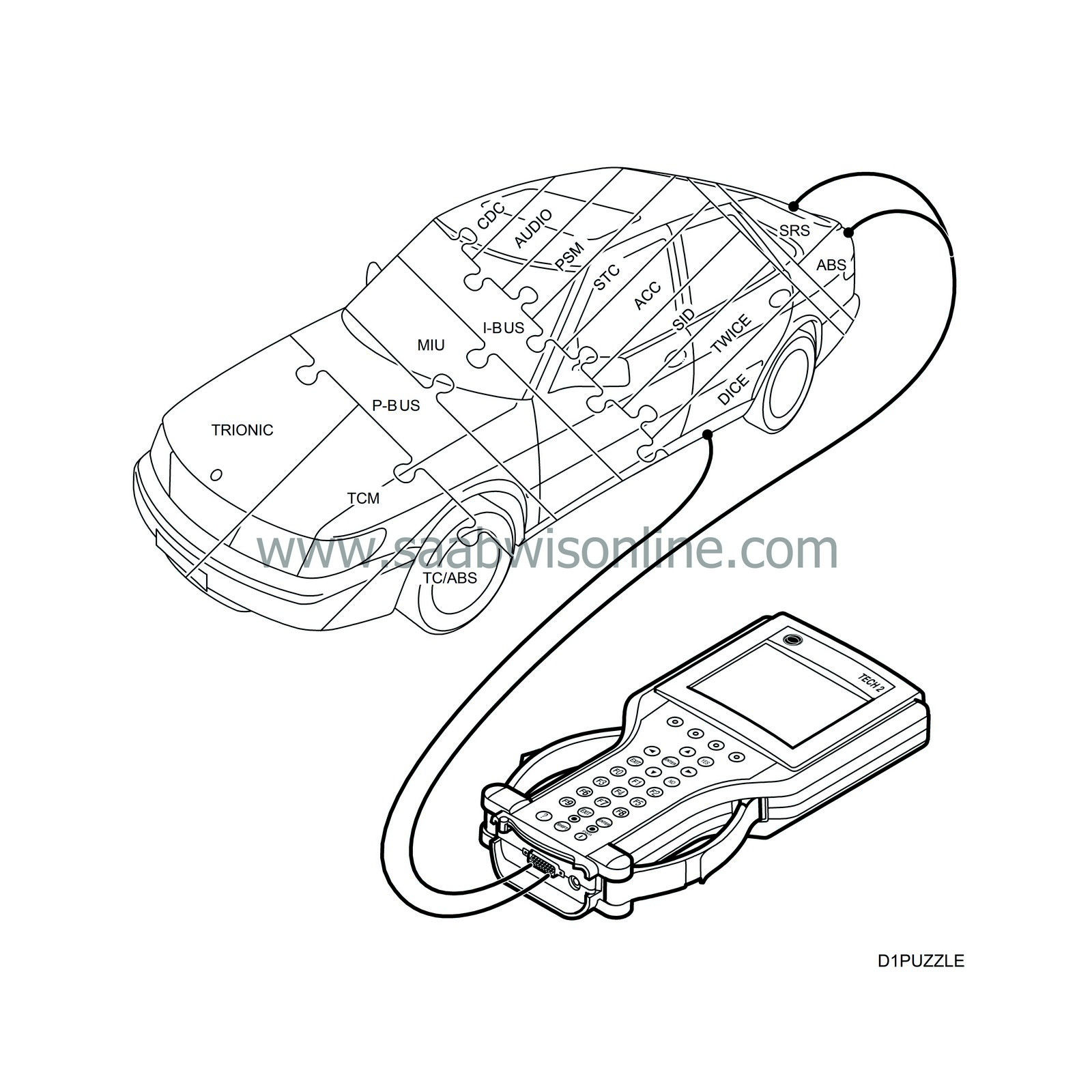
P-bus and I-bus in the Saab 9-3
All the control modules in the Saab 9-3 are connected to a bus, except for the ABS and SRS. In cars that have traction control, the TCS/ABS control module is connected to the bus.
The bus allows large quantities of information to be exchanged between control modules on only two wires. The bus is divided into a Powertrain bus (P-bus) and Instrument bus (I-bus).
The engine systems Trionic, TCM and TC/ABS require rapid communication so that there are no noticeable delays, for example when limiting engine torque during gearchanges.
The Trionic, TCM and TC/ABS are connected to the P-bus. The data transfer rate on the P-bus is ten times higher than the I-bus.
The P-bus and I-bus are connected to the MIU. The MIU is responsible for ensuring that information available on one bus is also available on the other bus.
The diagnostic tool is not connected directly to the bus but communicates via the DICE, one of the control modules on the I-bus, and thus has access to all control modules connected to the bus.
Vehicle speed is an important item of information for many control modules. Since the ABS is not connected to a bus, the vehicle speed signal goes from the ABS to the MIU via a cable of its own. The MIU then sends out the vehicle speed information on the buses. In cars with Traction Control, the MIU receives vehicle speed information from the TC/ABS control module via the P-bus.
|
System overview, brief description, cars with EDC 15 engine management system
|

The two powertrain systems EDC 15 and the diesel pump are not connected to the I-bus. These systems require
much faster
communication so that there are no noticeable delays when EDC requests a new fuel mass per injection or a new injection timing, for example.
They are therefore connected by a separate bus called the P-bus (Powertrain Bus). Communication on the P-bus is ten times faster than on the I-bus.
The P-bus is also connected to the MIU. The MIU is responsible for ensuring that information available on one bus is also available on the other bus. Note also that the EDC 15 has a separate K lead for the diagnostic tool.
|
System overview, brief description, cars with PSG 16 engine management system
|
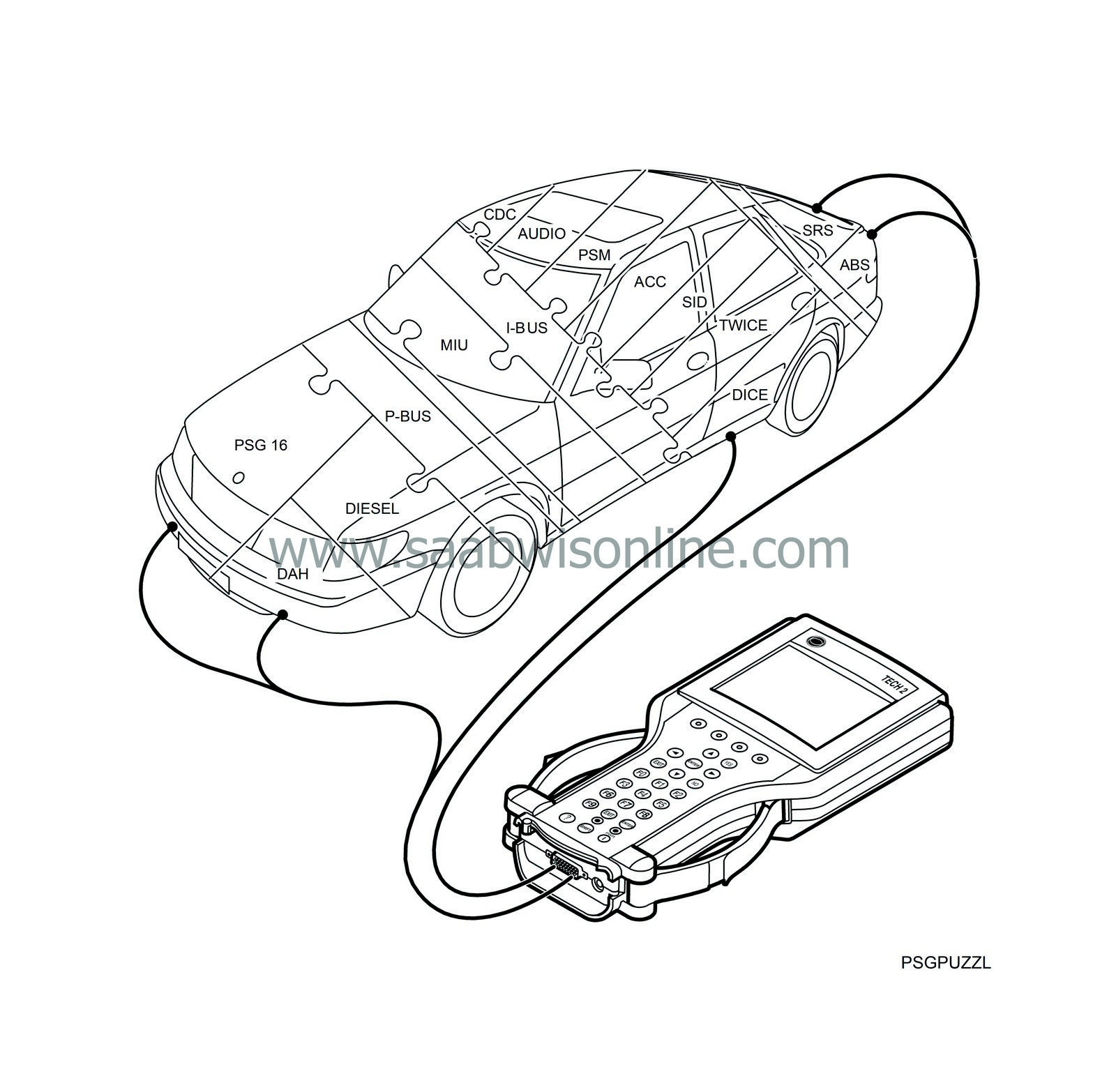
The PSG 16 engine control module is not connected to the I-bus. This system requires
much faster
communication so that there are no noticeable delays when the engine control module requests a new fuel mass per injection or a new injection timing, for example.
The engine control module is connected by a separate bus called the P-bus (Powertrain Bus). Communication on the P-bus is ten times faster than on the I-bus.
The P-bus is also connected to the MIU. The MIU is responsible for ensuring that information available on one bus is also available on the other bus. Note also that the PSG 16 has a separate K lead for the diagnostic tool.














